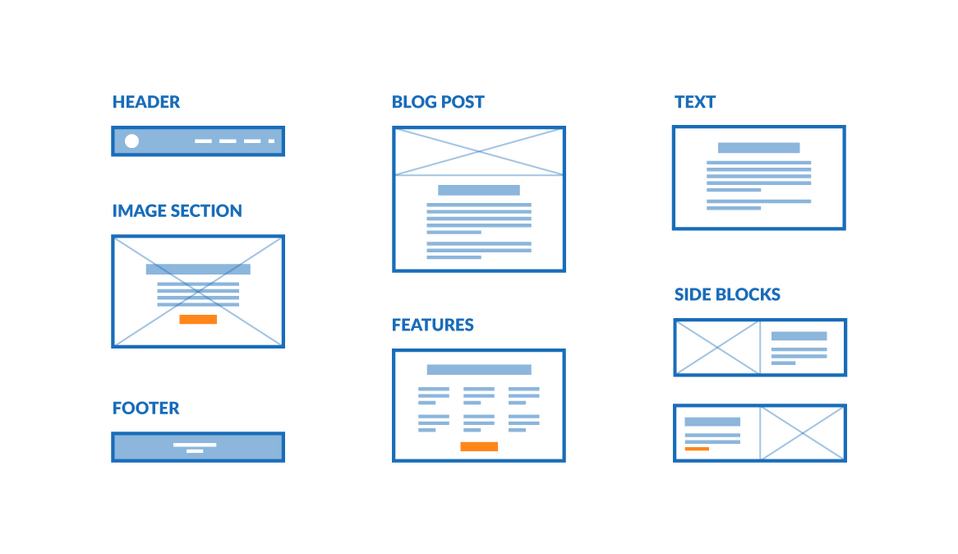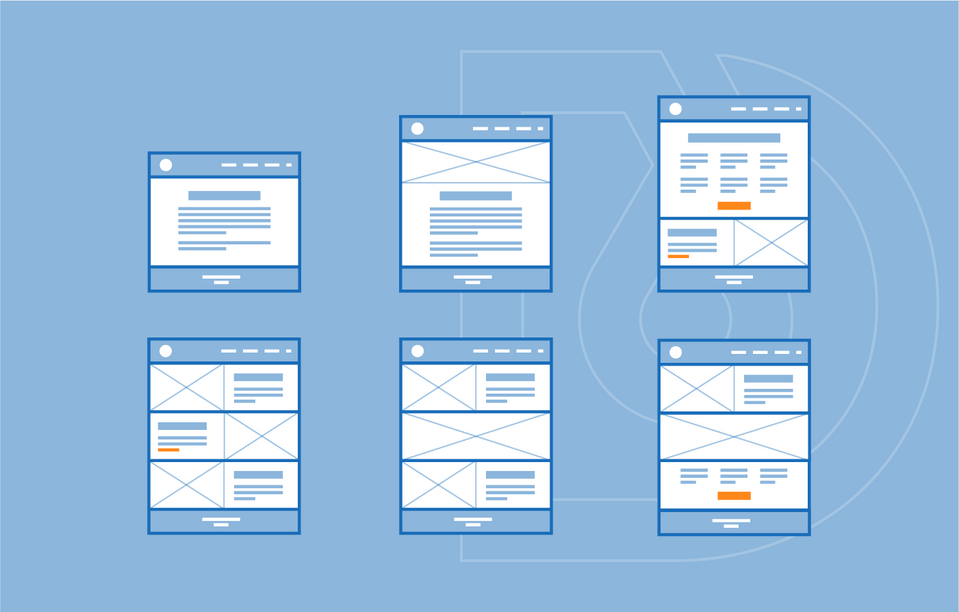
Component-Based Design. What Is It? What Is It All About? What Are Its Benefits?
In recent years, we’ve been witnessing a strong trend – building websites based on ready-made components, which is conventionally referred to as component-based design. This solution is becoming increasingly popular since it offers numerous benefits and advantages. This article outlines the concept of components, as well as offers an overview of what you gain by taking advantage of this approach.
What is a component-based design?
The concept of component-based design envisions building websites out of ready-made elements (components), which are designed and programmed segments to be used as building blocks for your website. What is more, thanks to their modular nature, they can be easily reused on all subpages.
In other words, components are like LEGO bricks, which you can assemble in various ways to build your subpages by composing and arranging them in various ways in order to achieve the desired goal. A component is like a ready-made element, which you can fill with any content or add graphic elements to it. What is more, components are not tied to specific subpages, which means that you can use them throughout your website. Examples of such components include text blocks, a photo banner, a contact form, or a call-to-action block. If you find yourself in a need to come up with a new landing page in a pinch, you can easily and quickly build one using a library of ready-made components. That means you don’t have to pay the developers to code it from scratch since all the elements were coded ahead of time.

Benefits of component-based websites
What are the advantages and benefits of a website structure based on ready-made components? One of the most important ones is definitely versatility in reusing these building blocks since they enable you to freely shape and rearrange your website without the help of developers. What is more, thanks to a broad range of ready-made elements, your website becomes a universal content presentation tool. The components are intuitive and easy to use, and more importantly, they don’t require you to have any web development knowledge. They are designed in such a way as to make any website administrator able to easily modify and add required sections and build new subpages. In other words, you can simply click your way to a new subpage if you need one.
Thanks to reusing components on various subpages, all changes in design or code modifications of a given element are easier. You can modify the design of the component template, and all subpages containing the component will immediately adapt and reflect the changes. This is a great time-saver, since all changes have to be made just once, and the effect is visible immediately on all subpages that use the given component.
By building a component-based website, in reality, you’re building a website management system. The resulting tool is both effective and easy to use, and as an additional perk, it offers outstanding potential in terms of modification to website administrator. Building such a website requires creating a basic structure, which enables the administrator to freely shape the subpages, as well as designing and coding elements, which can be added to the structure.
Other advantages of using component-based websites include:
- minimising the cost of managing the website, as well as introducing changes in the content and structure of its subpages,
- simplicity and intuitiveness of the components and their use,
- ease of adding new blocks to a website based on ready-made components, enabling easy expansion according to the needs and demands,
- easy website administration and management in companies, where component-based websites can be managed by a group of people.
What are the challenges for the design and development team?
When approaching a component-based website, designers need to have a comprehensive overview of the project, since their design work mostly comprises coming up with individual independent modules. The key challenge is to create such a layout and functionalities of all elements that it fits the website, regardless of the situation or combination with other entities. In other words, the role of the designer in component-based design is not to design complete subpages, but instead, it is to come up with a library of elements that should function well without any further interventions. Thus, the design work comprises mostly getting to know the client’s exact expectations and proposing specific components to suit their needs. On the other hand, developers should think about individual components and the way they work, as well as implement them in such a way as to avoid conflicts and incompatibilities. The role of the developers is to build a system architecture that allows for convenient use of ready-made components while being open to expansion and changes.

Droopler as an example of a component-based website
Droopler is a good example of a Drupal website built in line with the component-based design paradigm. Droopler is a Drupal-based content management system, which enables users to create extensive websites based on a collection of ready-made elements. Creating and managing the resulting website is simple and intuitive even for people, who aren’t well-versed in new technologies. If you’re interested to see how such a system works in reality, feel free to check out our Droopler demo page, where you can find more information, download Droopler and experiment with building your own website.










